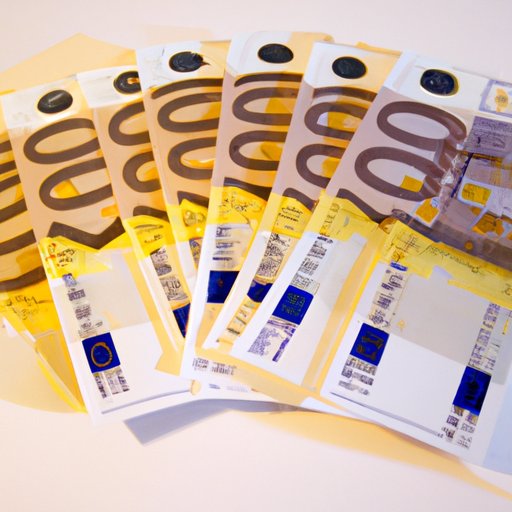
Introduction
Money multiplier is one of the most important concepts in the field of economics and banking. The purpose of this article is to provide readers with a step by step guide on calculating money multiplier, as well as explore its history, importance, criticisms, applications, and associated economic theories. In simple terms, the money multiplier measures the effect of a change in reserves on the money supply.
The Formula Explained
The formula for calculating the money multiplier is straightforward and involves a few variables. To calculate the money multiplier, one needs to use the following formula:
Money Multiplier = 1 / Reserve Requirement Ratio
In this formula, “Reserve Requirement Ratio” refers to the amount of reserves that banks are required to hold by the central bank, expressed as a percent of deposits.
For example, if the reserve requirement ratio is 10%, the money multiplier would be 1/0.1, which equals 10. This means that the initial deposit of $1000 would turn into $10000 in the economy.
Importance of Money Multiplier
The money multiplier is crucial for understanding the banking system and the economy. Policymakers use the money multiplier to assess the health of the economy. It helps them in making important decisions such as whether to increase or decrease the money supply, and to control inflation. By understanding the money multiplier concept, individuals and businesses can plan their financial strategies better.
Historical Context of Money Multiplier
The money multiplier has a rich history dating back to the Great Depression era. It has evolved over time through various economic doctrines such as classical economics, monetarism, Keynesianism, and modern banking systems. Initially, the money multiplier was used as a tool to control the money supply and stabilize the economy during the Depression. It has since become a crucial aspect of monetary policy.
Criticisms of the Money Multiplier
Despite its widespread usage, the money multiplier has faced significant criticism. One of the main criticisms is that it assumes banks lend out all of their excess reserves, which is often not the case. Subsequently, the actual money supply may not correspond with the theoretical calculation. Critics also argue that the money multiplier is not as significant as it used to be in the contemporary banking system. Central banks now use other tools such as quantitative easing to control the money supply.
Applications of the Money Multiplier
The money multiplier has practical applications in several areas such as inflation, deflation, money supply, and reserve requirements. For example, by changing the reserve requirement ratio, central banks can increase or decrease the money supply. By understanding the money multiplier, investors can better plan their financial strategies by analyzing the effects of monetary policies.
Theories Based on Money Multiplier
Several economic theories are based on the concept of the money multiplier. One of the most renowned is the Keynesian theory. Keynesian economists suggest that the government can stimulate the economy by increasing the money supply through expansionary monetary policy. The Austrian business cycle theory suggests that excessive expansion of the money supply leads to economic instability. Monetarists believe that controlling the money supply can result in stable economic growth.
Conclusion
In conclusion, the money multiplier is a significant indicator of the health of the economy and banking system. Policymakers, economists, and individuals can use the concept of the money multiplier to make informed financial decisions. Understanding the formula and variables is essential to identifying the impact of monetary policies on the economy. Despite the criticisms, the money multiplier remains a critical concept in today’s global economy.





